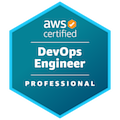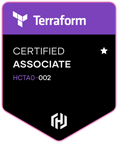What is Material UI?
Material UI is a widely-used open-source React component library that offers customizable and reusable UI components following Google's Material Design guidelines. It helps developers create elegant and consistent user interfaces for web applications.
Material UI includes a variety of components, such as buttons, icons, forms, tables, modals, and more, all of which are highly customizable. These components integrate seamlessly with React and come with extensive documentation and examples to help developers get started quickly.
One of the standout features of Material UI is its powerful theming capabilities. The library's theming API allows developers to customize the application’s look and feel by defining custom color palettes, typography, and spacing that align with their brand or project requirements.
Material UI also provides utilities and helpers, including a responsive grid system that simplifies creating adaptable layouts.
Material UI Core Concepts
Components
Material UI offers a wide range of reusable and customizable UI components, such as buttons, forms, and modals, designed to adhere to Material Design guidelines.
Theming
With its theming API, Material UI allows developers to define custom color palettes, typography, and spacing, enabling a consistent design that aligns with brand requirements.
Grid System
Material UI's responsive 12-column grid system helps developers build layouts that adapt to various screen sizes using predefined breakpoints.
Styling
Material UI uses CSS-in-JS, allowing styles to be defined directly within component code. Developers can also leverage the theme object to apply global styles.
Icons
Material UI provides a library of Material Design icons that are customizable through the theming API.
Accessibility
Material UI components are optimized for accessibility, including support for screen readers and keyboard navigation. Comprehensive accessibility guidelines and best practices are included in the documentation.
Pros and Cons of Material UI
Pros:
- Consistent and Elegant Design: Adheres to Google's Material Design guidelines for a polished look and feel.
- Customizable: Highly flexible components that can be tailored to specific project needs.
- Theming Capabilities: A robust theming API for creating unique and branded designs.
- Accessibility: Optimized components for screen readers and keyboard navigation.
- Large Community and Active Development: Extensive resources, examples, and regular updates from an active community.
Cons:
- Learning Curve: Requires time to learn its components and theming system.
- Code Bloat: The library’s vast range of components and utilities may increase bundle size and impact performance.
- Limited Customizability: While flexible, some components have constraints that limit deep customization.
- React Dependency: Designed specifically for React, making it less suitable for other JavaScript frameworks.
- Risk of Overusing: Over-reliance on Material UI components can lead to generic-looking applications.
Comparing Popular CSS Frameworks: Material UI, Bootstrap CSS, and Tailwind CSS
| Feature | Material UI | Bootstrap CSS | Tailwind CSS |
|---|---|---|---|
| Design | Material Design | Customizable design | Utility-first design |
| Components | 90+ | 20+ | N/A |
| Utility Classes | N/A | 200+ | 400+ |
| Theming | Powerful theming API | Limited theming options | Customizable via configuration |
| Responsiveness | Built-in grid system | Built-in grid system | Built-in grid system |
| Learning Curve | Medium-High | Low-Medium | Low |
| Customizability | High | Medium | High |
| JavaScript | Heavy dependency on React | Optional | Optional |
| Popularity | Widely used in React community | Widely used by web developers | Rapidly growing in popularity |
| Community | Large and active | Large and active | Rapidly growing |
Our Material UI Development Process with Modular Focus
At Space-Rocket, we employ a well-defined development process to ensure every Material UI project meets high standards for quality, performance, and usability.
Stages of Development
- Consultation and Requirements Gathering: Understand business goals and define project needs to deliver tailored solutions.
- Planning and Architecture: Design scalable, performant, and user-friendly Material UI applications.
- Modular Component and Page Development: Build modular components for maintainability, usability, and scalability using best practices.
- Continuous Integration (CI): Integrate code changes regularly to catch issues early and maintain deployable application states.
- Continuous Deployment (CD): Automate deployments for efficient delivery of updates.
- Ongoing Maintenance and Support: Ensure the application continues to perform well and align with business needs over time.
Our Promise to Clients
We are dedicated to delivering high-quality Material UI development services with a modular focus. Our experienced developers ensure that every project is completed to the highest standards.
Contact Space-Rocket today to discuss your Material UI development needs and schedule a consultation or get a free quote!


